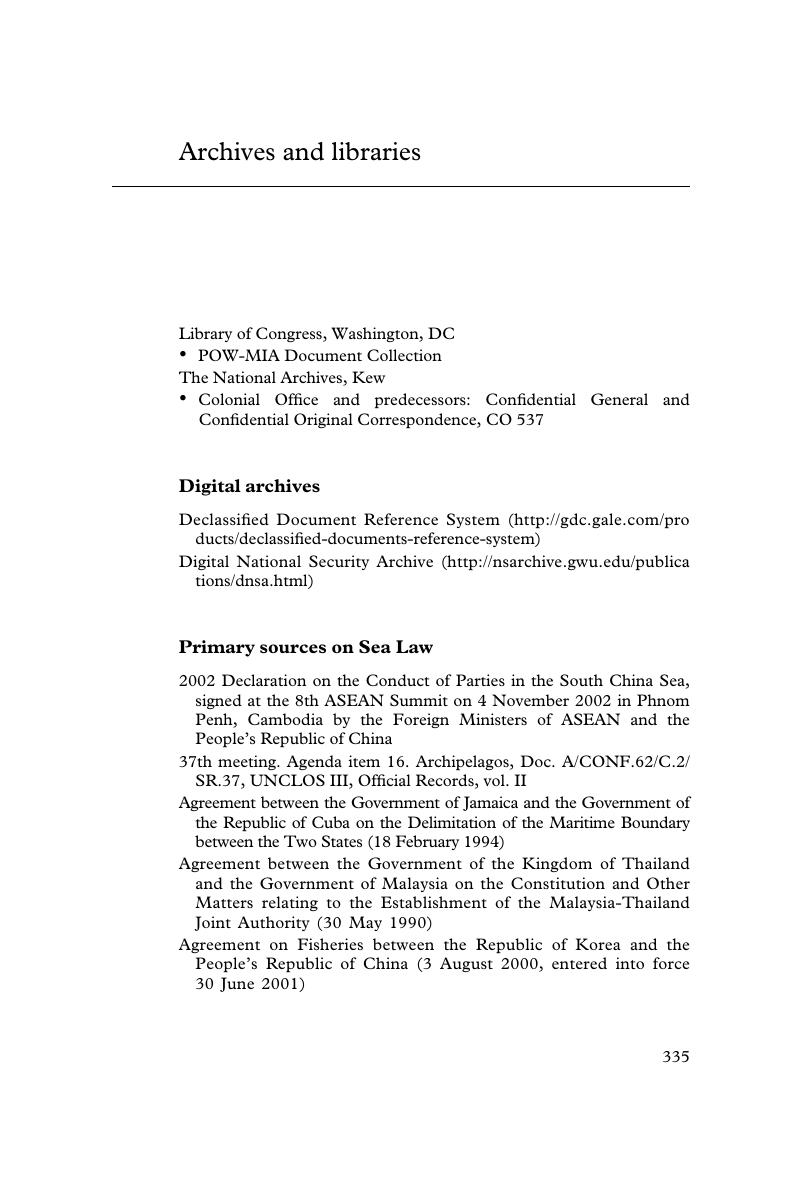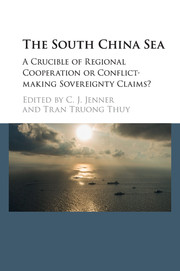Book contents
- The South China Sea
- The South China Sea
- Copyright page
- Contents
- Maps
- Contributors
- Book part
- Introduction: A crucible of regional cooperation or conflict-making sovereignty claims?
- Part I Global dimensions
- Part II Subnational, national and regional interests
- Part III International maritime law
- Part IV Towards conflict or cooperation?
- Archives and libraries
- Index
- References
Archives and libraries
Published online by Cambridge University Press: 05 August 2016
- The South China Sea
- The South China Sea
- Copyright page
- Contents
- Maps
- Contributors
- Book part
- Introduction: A crucible of regional cooperation or conflict-making sovereignty claims?
- Part I Global dimensions
- Part II Subnational, national and regional interests
- Part III International maritime law
- Part IV Towards conflict or cooperation?
- Archives and libraries
- Index
- References
Summary

- Type
- Chapter
- Information
- The South China SeaA Crucible of Regional Cooperation or Conflict-making Sovereignty Claims?, pp. 335 - 357Publisher: Cambridge University PressPrint publication year: 2016



